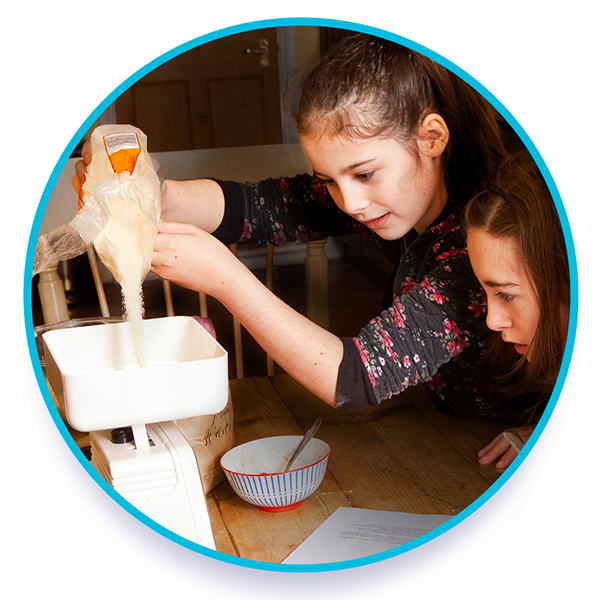Dyscalculia: In and Out of the Classroom

Dyscalculia, a learning disability that affects one’s ability to learn mathematics, may cause difficulty with counting, working memory for numbers, ability to recognize patterns, time, sense of direction, estimation of distance and volume, math facts, and procedures.
When we talk about learning disorders, we sometimes don’t think of the implications outside of the classroom and the practical application of those skills in the real-world. Some may remember asking, “Why do I need to know this?” in their math classes only to realize their chosen career path and the activities they do outside of school and work rely heavily on that skill set.
Dyscalculia is more than a learning disorder that makes it difficult for students to complete mathematical computations. Without the right instructional practices and tools in place to help in the classroom, students and adults with dyscalculia may face challenges when completing tasks and assignments. Let’s dig into some examples of how dyscalculia looks in and out of the classroom.
In a previous blog we talked about common signs of dyscalculia. As a reminder, in the classroom dyscalculia may look like students:
- Having difficulty completing assignments.
- Confusing the order of operations.
- Struggling to apply concepts, rules, formulas, and/or sequence.
- Having trouble using mental math during lessons or on homework assignments/tests.
You can spot signs of dyscalculia outside of the classroom as well. Here are five examples:

1. Playing Games
When you think back to your favorite game you may remember Go Fish the card game, The Game of Life board game, or Zoombinis the computer game. All these games have components that involve using math. Those with dyscalculia may not enjoy these types of games as it involves a significant amount of mental math.

2. On the Road
Many of us have taken road trips where we’ve had to look at a map and plan stops along the way, activities, and meal breaks. Those with dyscalculia may have difficulty using the key to judge distances, differentiating between turning right or left, and/or confusing north and south or east and west. They may also be more likely to mix up the order of their directions and turn too early or the wrong way.

3. At the Doctor
Those with dyscalculia may be more likely to arrive late to events, appointments, or class. They may also get the seconds, minutes, and hour hands confused on an analog clock. In adults you can also see this when looking at medications. Those with dyscalculia may confuse the order of numbers when writing down their dosage or prescription number when reading from the pill bottle.

4. In the Kitchen
Have you ever tried to make brownies, but misjudged the amount of milk you have left or tried to double a batch only to add four times as much baking powder? People with dyscalculia may experience challenges when estimating the remaining volume of liquid in containers or increasing and decreasing the amount of ingredients when making more servings than the recipe calls for. They may also have trouble planning when to start preparing the meal to eat at a certain time.

5. On the Job
Many jobs rely on the handling of money and making change. Let’s say you work in a movie theater box office. A customer comes up and would like one movie ticket. The cost of a movie ticket is $12.50. The customer hands you a ten-dollar bill and a five-dollar bill. Those with dyscalculia may have trouble with the mental math involved in making that change. That type of public setting can also cause anxiety when trying to perform the mental math calculations.
Dyscalculia may make things harder to do mentally, but there are a number of supports built to help intervene as students make their way through primary and secondary school as well as tools for adults.
We at TouchMath have seen the impact of early screening and intervention, and that is why we subsidized the cost of a comprehensive dyscalculia screener, DySc. DySc can be easily administered by school-based professionals, early childhood educators, and parents for learners in the following age bands: 3-4, 5-7, 8 and up. After completion, DySc generates a report that provides four key outputs:
- Results of the DySc screener
- Copy of the DySc educator/guardian survey
- Recommended action plan
- Recommended intervention plan based on the learner’s results
We’re changing the way students experience math and preparing teachers and caregivers with the tools they need to support their students continued learning journey.
DySc: Free Dyscalculia Screener
TouchMath cares about equitable access of tools and support to make math accessible to all. We’ve spent years creating a comprehensive dyscalculia screener, and subsidized the cost, so that all students, parents, and teachers have access to the resources they need to detect, act on, and engage in informed conversations on dyscalculia.
Math is a critical skill, and we create resources to help every student master math. Learn more at https://touchmath.com/
